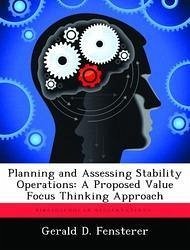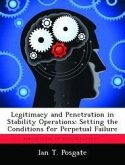Stability operations are vital to establish peace in the aftermath of conflict. Larger nations in the eastern hemisphere have been in a constant state of change since the end of the Cold War. Smaller countries struggling for independence from the former USSR as well as several Middle Eastern countries and Africa are suffering from conflict both within and without. The United States is often called on for military support during conflict. The new American military paradigms include establishing peace through stability operations after a military conflict. Due to this new role, military decision makers face many difficulties in conducting successful stability operations. Compounding this problem is the limited number of resources pertaining to stability operations: experts, doctrine, knowledge, and technology. Two overarching challenges of stability operations facing decision makers are planning and prioritizing of stability operations and determining progress. This thesis applies a structured analytical approach to stability operations by using the decision analysis technique of value focus thinking. It develops a tool in the form of a value hierarchy that can be used to assist in the planning and prioritizing of stability operations. The purpose of the hierarchy is two-fold. The main purpose is to provide the decision maker with a method to measure the progress of the stability operations in moving a failed state to a stable one. The secondary purpose is to help the decision maker determine which actions will have the greatest impact on improving the stability of the nation-state.
Bitte wählen Sie Ihr Anliegen aus.
Rechnungen
Retourenschein anfordern
Bestellstatus
Storno








